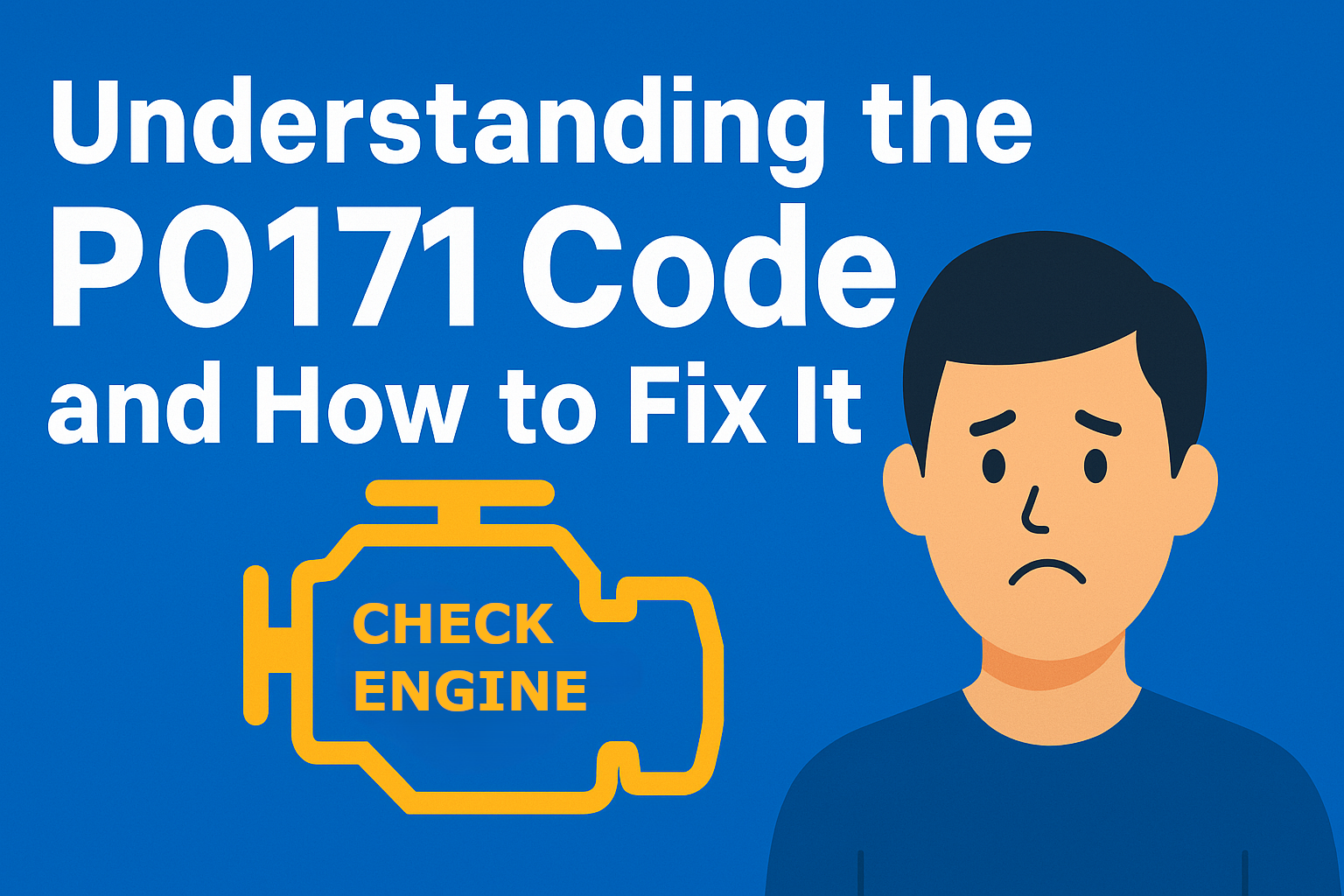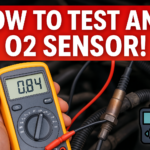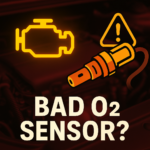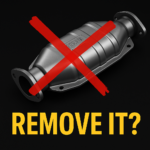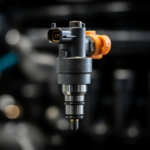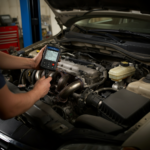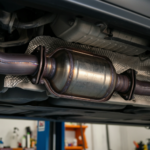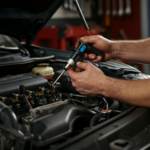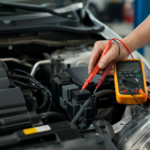When the dreaded “check engine light” suddenly illuminates, your first thought might be, “What’s wrong now?”. For many car owners and mechanics, encountering the P0171 code is a common diagnosis. This code, also known as “System Too Lean (Bank 1),” can be frustrating if you’re unsure of its causes or how to address it.
This blog will break down everything you need to know about the P0171 code, including what it means, what causes it, and how to fix it. Whether you’re a car enthusiast or a mechanic looking for a detailed understanding, you’re in the right place.
What Does the P0171 Code Mean?
At its core, the P0171 engine code signifies that the engine is running “lean” on the first bank. But what does this mean?
Running lean happens when your car’s air-to-fuel ratio is off-balance—specifically, there’s more air and less fuel than necessary for optimal combustion. Your vehicle’s onboard diagnostics system (OBD) detects this imbalance and generates the trouble code P0171.
What Does “System Too Lean Bank 1” Mean?
The term “Bank 1” refers to the side of the engine where cylinder one is located. If your engine’s air-fuel mixture is improperly calibrated on this bank, the sensors will flag the issue, resulting in the P0171 system too lean (Bank 1) message.
What Are the Symptoms of the P0171 Code?
Identifying the symptoms of the P0171 fault code early can help you address the problem before it worsens. Here are the most common signs to watch out for:
- Illuminated Check Engine Light – The primary indication of a problem.
- Rough Idle – The engine may shake or feel unstable while idling.
- Loss of Engine Power – An imbalance in the air-fuel mixture can reduce performance.
- Poor Fuel Efficiency – When the fuel trim system is lean, your car can burn extra fuel trying to compensate.
- Engine Stalling – The engine may cut off due to insufficient fuel delivery.
- Unusual Exhaust Odors – A lean mixture can affect the smell of your car’s emissions.
What Causes the P0171 Code?
Several potential culprits can trigger a “System Too Lean” condition. Here’s a list of the most common causes:
- Dirty or Failing Mass Air Flow (MAF) Sensor
The MAF sensor measures the amount of air entering your engine. A dirty or malfunctioning sensor can misread airflow data, resulting in an incorrect air-fuel ratio.
- Vacuum Leaks
Cracks or leaks in the intake manifold gasket, hoses, or connections can disrupt airflow.
- Faulty Oxygen Sensor
The oxygen sensor measures how much oxygen is present in the exhaust system. When it’s faulty, it can send inaccurate data to the engine control unit (ECU).
- Clogged Fuel Filter or Low Fuel Pressure
Insufficient fuel supply—caused by a fuel pump issue or clogged fuel filter—can create a lean condition.
- Bad Fuel Injectors
Faulty or clogged fuel injectors fail to supply the appropriate amount of fuel needed for efficient combustion.
- Exhaust System Issues
Leaks in the exhaust system can cause inaccurate oxygen readings, potentially triggering the P0171 code.
For a deeper understanding of potential fuel injector issues, check out this helpful guide on identifying symptoms of bad fuel injectors.
How to Fix the P0171 Code
Resolving the P0171 system too lean issue typically involves one or more of the following fixes.
1. Clean or Replace the MAF Sensor
- A simple MAF sensor cleaning can do wonders. Use a specialized MAF sensor cleaner to remove any dirt or debris.
- If cleaning doesn’t work, consider replacing the sensor.
-
2. Check for Vacuum Leaks
- Inspect the intake manifold gasket and hoses for cracks or damage.
- Repair or replace any problematic components to eliminate air leaks.
-
3. Replace Faulty Oxygen Sensors
- A failing O2 sensor can disrupt measurements of the air-fuel mixture. Swap it out if it’s not functioning optimally.
4. Replace the Fuel Filter or Check Fuel Pressure
- Ensure fuel pressure is within the manufacturer’s specifications. A faulty fuel pressure regulator or pump might need attention.
- Replace a clogged fuel filter if necessary.
-
5. Fix or Replace the Fuel Injectors
- Use a fuel injector cleaning kit to unclog dirty injectors.
- Replace any injectors that are damaged or beyond repair.
-
For more details about air-fuel mixtures and how they affect your engine, visit this guide.
How Much Does It Cost to Fix the Code P0171?
The repair costs for fixing a P0171 engine code can vary widely based on the issue and labor rates in your area. Here’s a general breakdown of potential costs:
- MAF Sensor Cleaning/Replacement: $15–$300
- Vacuum Leak Repair: $50–$300
- Oxygen Sensor Replacement: $100–$400
- Fuel Injector Cleaning or Replacement: $50–$600
Always consult a qualified mechanic for an accurate quote and diagnosis.
Preventing the P0171 Code
Prevention is better (and often cheaper) than repair. Follow these tips to minimize the risk of a lean condition in your system:
- Perform regular maintenance, including replacing air filters and fuel filters.
- Use high-quality fuel to prevent residue buildup.
- Periodically clean or inspect sensors like the MAF and O2 sensors.
- Check for signs of wear in vacuum lines and seals.
When to Seek Professional Help
If your attempts to resolve the issue don’t clear the P0171 fault code or if you’re unsure about the next steps, it’s best to consult a professional. An experienced mechanic can use advanced diagnostic tools to pinpoint the exact cause of your issue.
Start Fixing Your Fuel Trim System Lean Condition
The P0171 code can feel like a headache, but with the right approach, it’s entirely fixable. Whether it’s cleaning the MAF sensor, replacing a fuel injector, or addressing a vacuum leak, taking action early can save you time and money.
Do you think your fuel injectors could be the root of the problem? Learn more about the signs and fixes here.
Your car deserves the best care, so don’t ignore the warning signs. Fix the issue now and get back to smooth, efficient driving.
